Chapter 3 THE CELLULAR LEVEL OF ORGANIZATION (lecture)
1/61
There's no tags or description
Looks like no tags are added yet.
Name | Mastery | Learn | Test | Matching | Spaced |
|---|
No study sessions yet.
62 Terms
phospholipid molecule
consists of a polar phosphate “head,” which is hydrophilic and a non-polar lipid “tail,” which is hydrophobic. Unsaturated fatty acids result in kinks in the hydrophobic tails.
phospholipid bilayer
bilayer consists of two adjacent sheets of phospholipids, arranged tail to tail. The hydrophobic tails associate with one another, forming the interior of the membrane. The polar heads contact the fluid inside and outside of the cell.
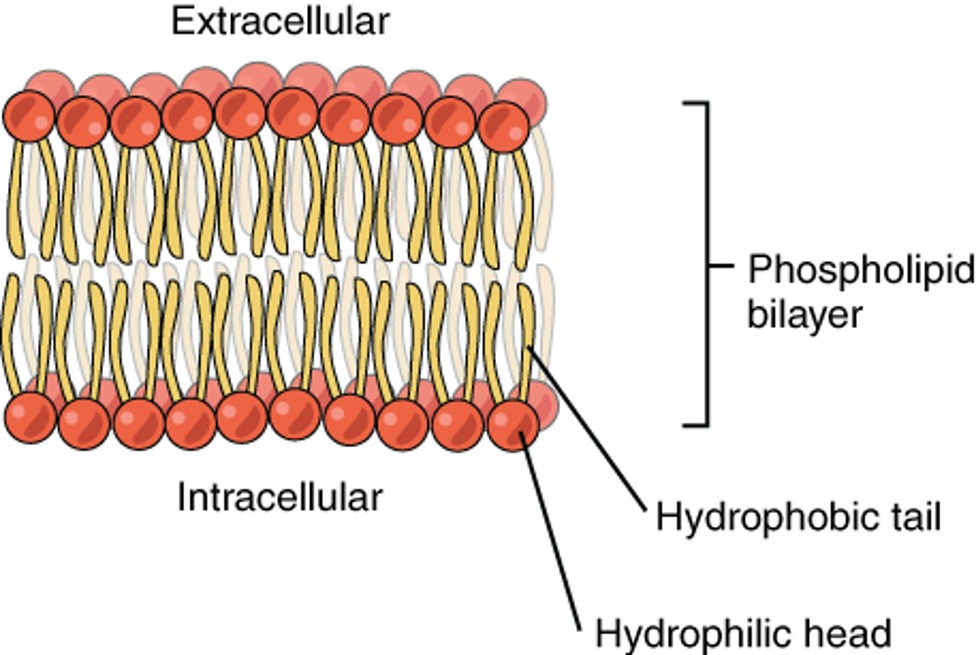
extracellular
means outside of cell
intracellular
means inside cell
Glycoprotein
A protein with a carbohydrate attached, involved in cell recognition (self cells and non-self cells) and signaling.
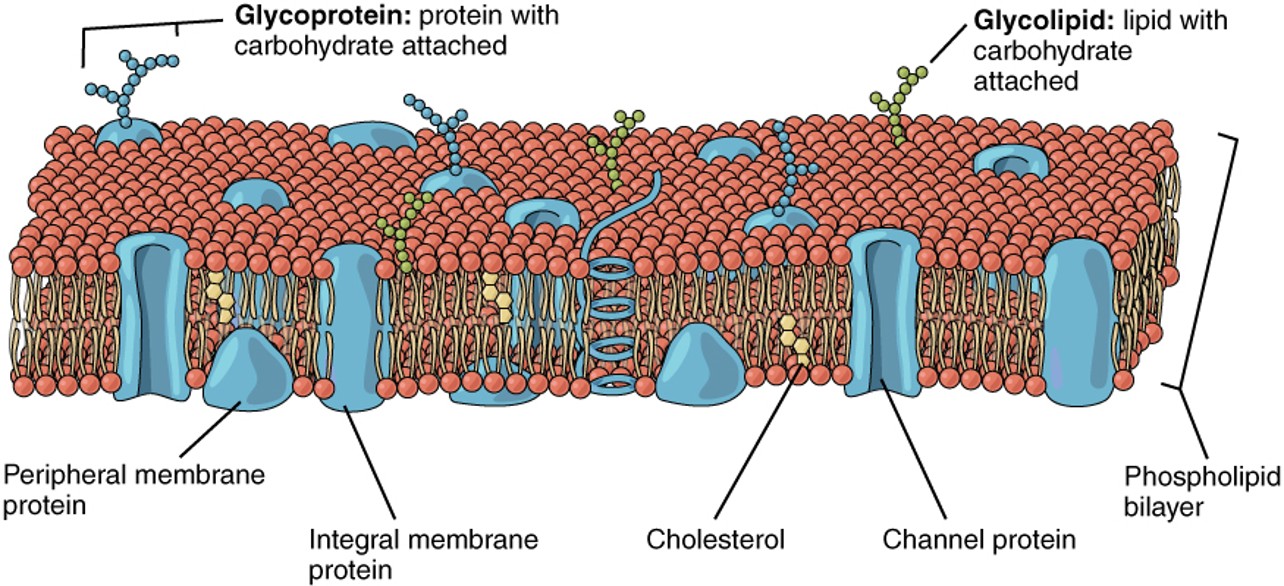
glycolipid
A lipid with a carbohydrate attached, playing a role in cell recognition and membrane stability.
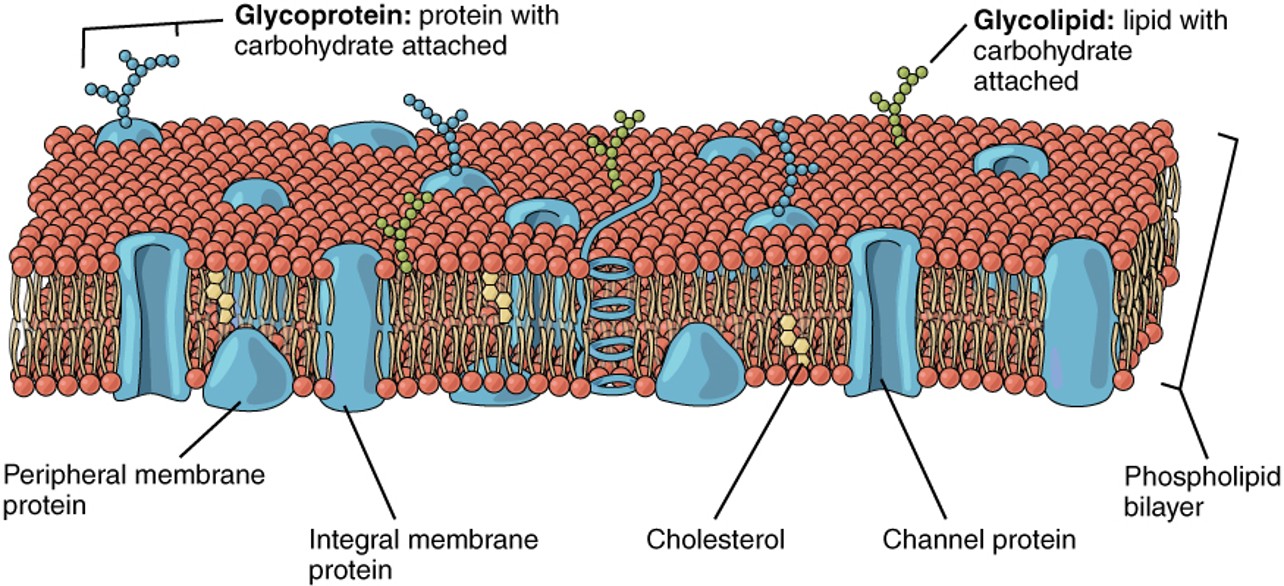
Peripheral membrane protein
A protein attached to the inner or outer surface of the membrane, involved in signaling and structural support.
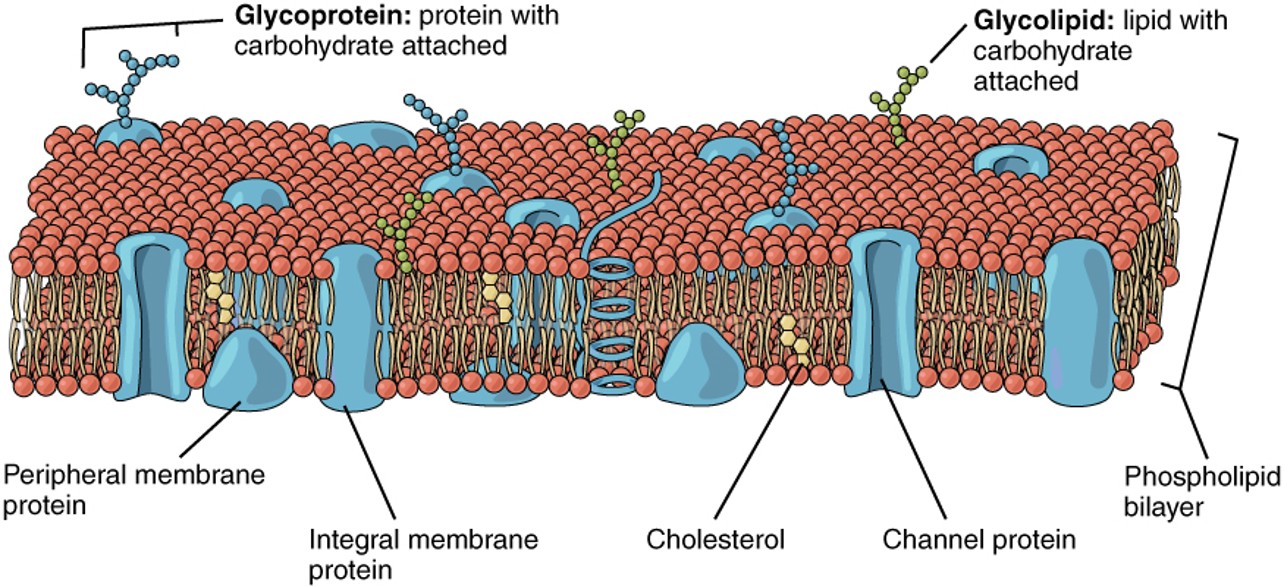
Integral membrane protein
A protein embedded within the membrane, often serving as receptors or transport channels.
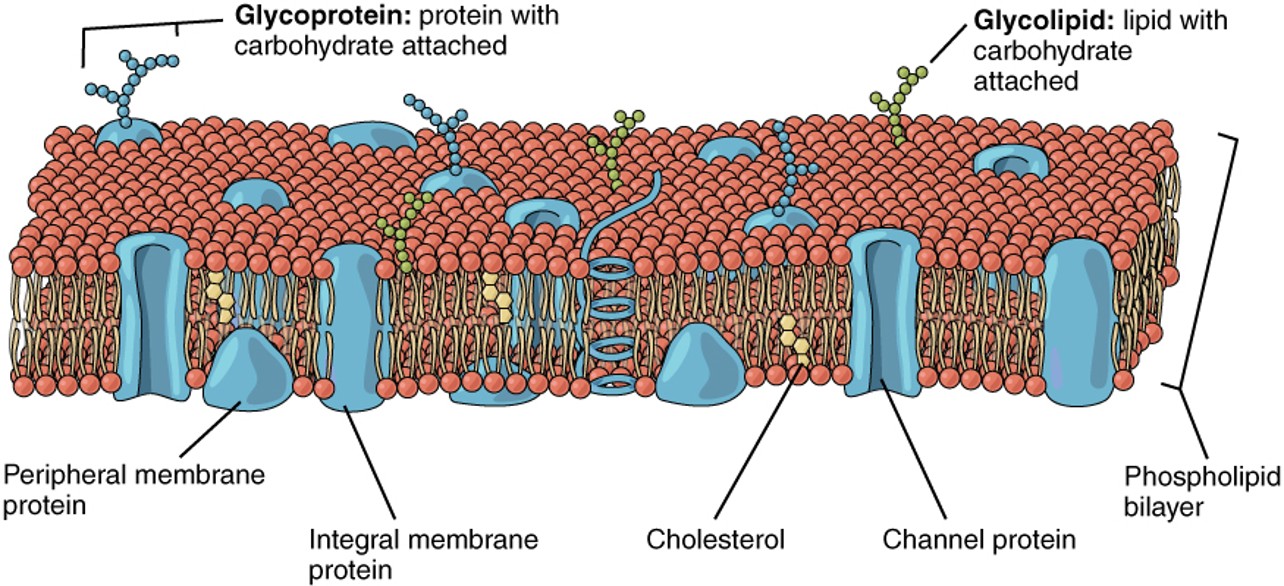
cholesterol
A lipid molecule within the membrane that helps maintain fluidity and stability.
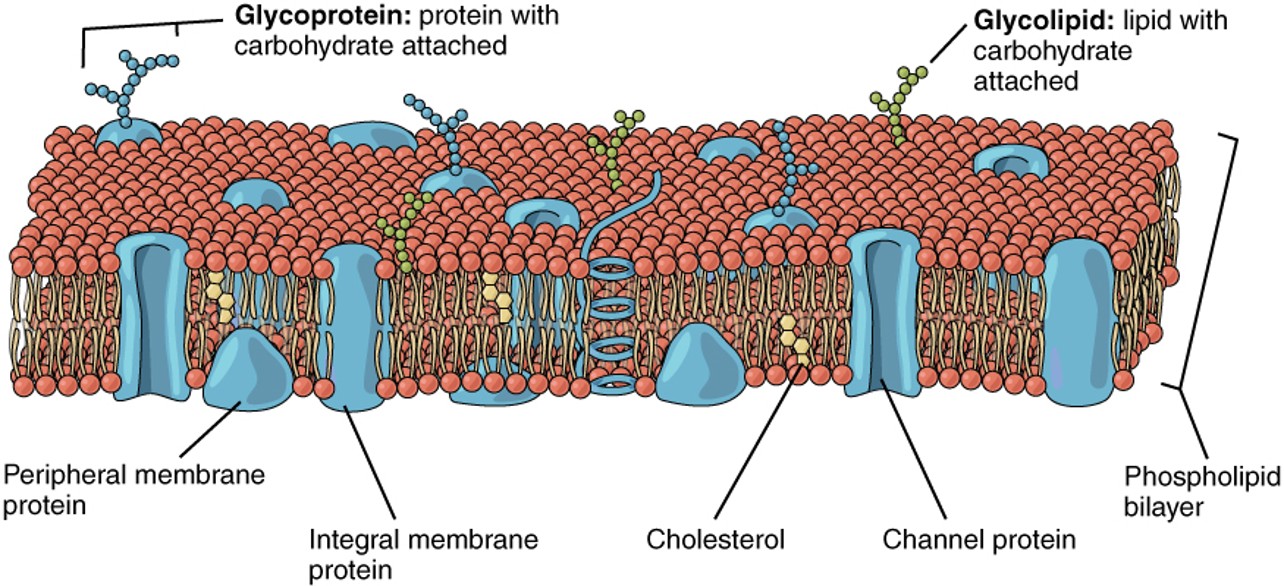
channel protein
A protein that forms a pore in the membrane, allowing specific molecules or ions to pass through.

gated channel/carrier protein
channels that can open or close to regulate passage of materials

semipermeable membrane
some things can pass through while others cant. usually based on size.
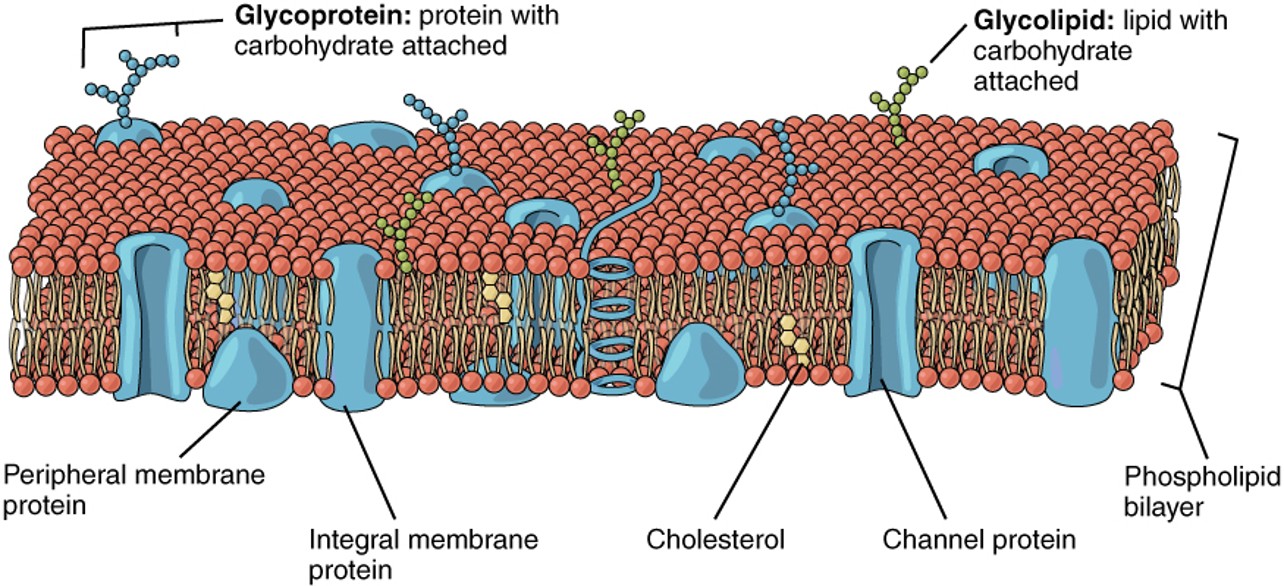
cell membrane
is a phospholipid bilayer containing many different molecular components, including proteins and cholesterol, some with carbohydrate groups attached.
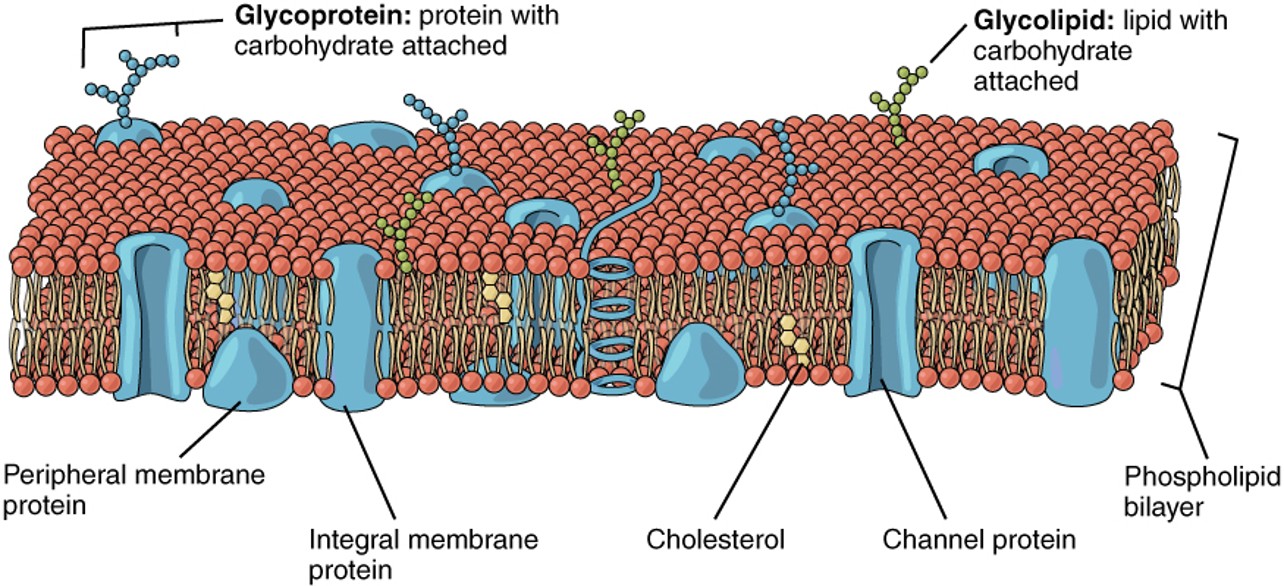
integral protein
entirely within the membrane
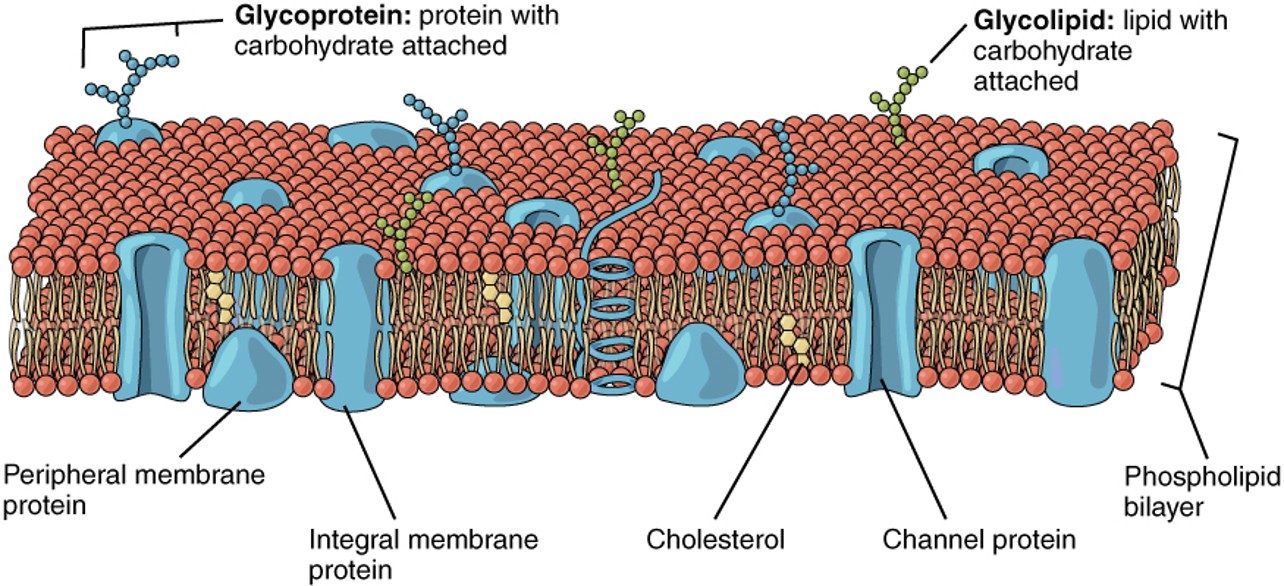
peripheral protein
on the edge of the membrane

cytoskeleton
composition: proteins organized in fine filaments or slender tubes
function: strength and support, movement of cellular structures and materials
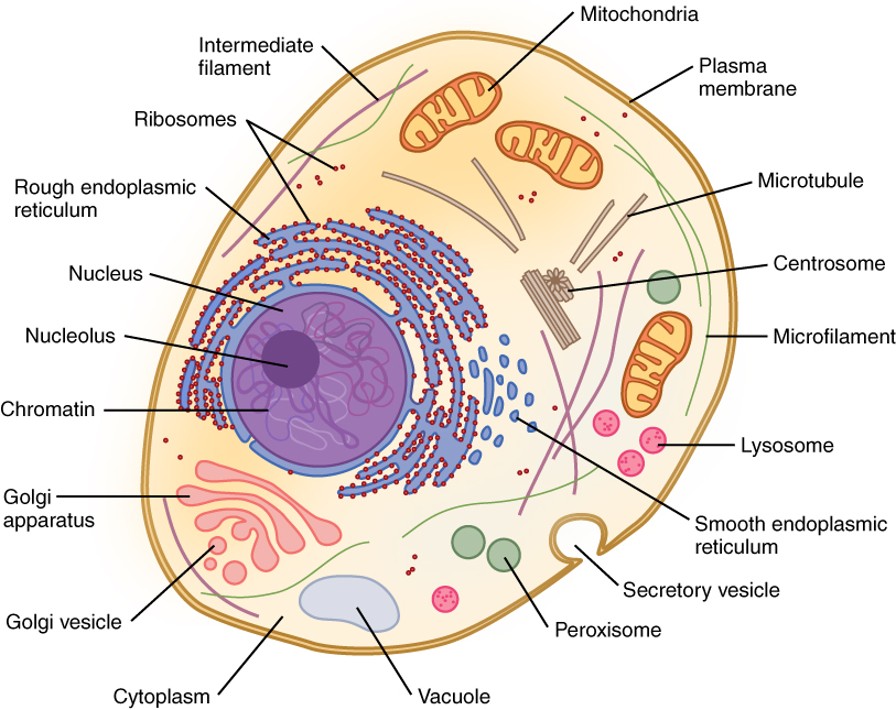
centrosome
composition: cytoplasm containing two centrioles, at right angles; each centriole is composed of nine microtube triplets
function: essential for movement of chromosomes during cell division; organization of microtubules in cytoskeleton
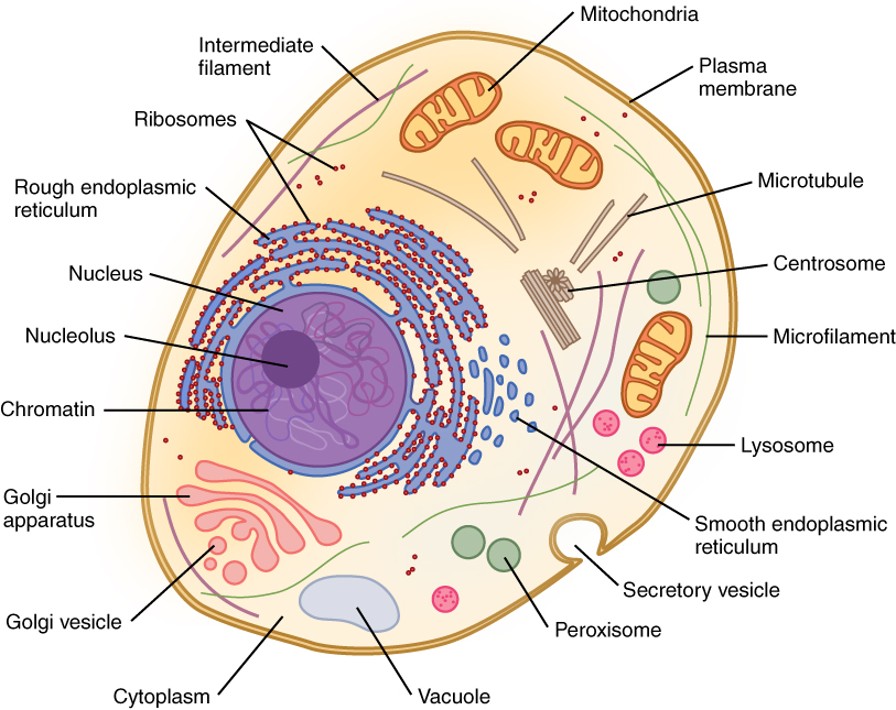
ribosomes
composition: RNA + proteins; attached ribosomes bound to rough endoplasmic reticulum; free ribosomes scattered in cytoplasm
function: protein synthesis
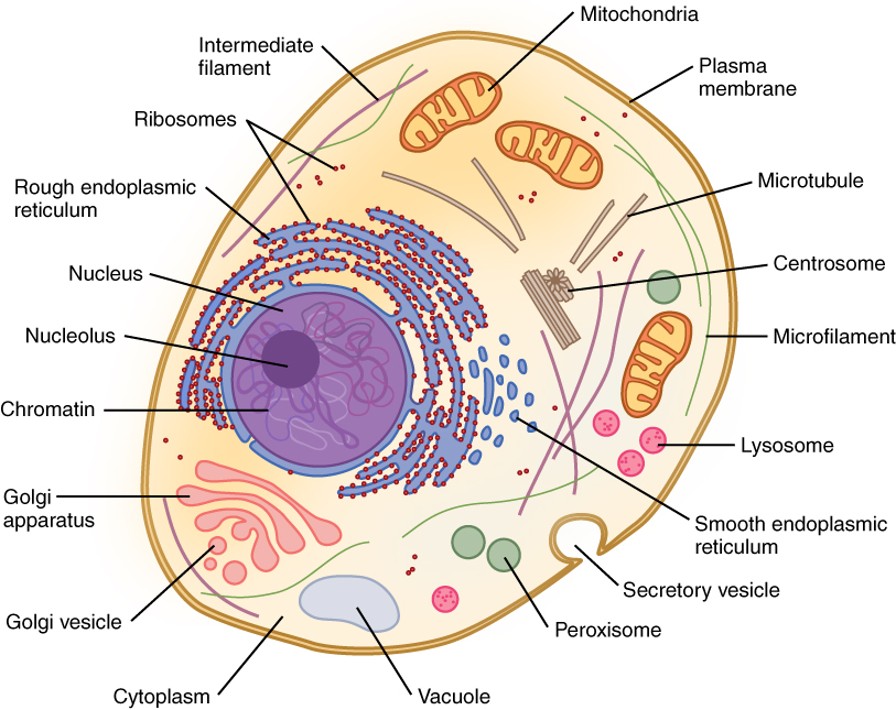
mitochondria
composition: double membrane, with inner membrane folds enclosing metabolic enzymes
function: produce majority of ATP required by cell
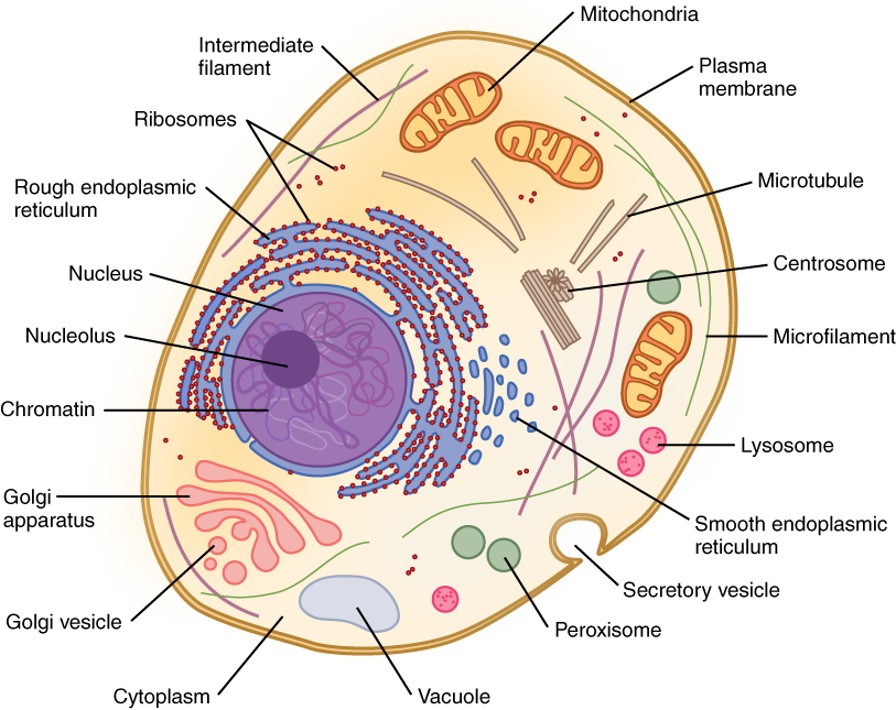
nucleus
composition: dense region in nucleoplasm containing DNA and RNA
function: control of metabolism; storage and processing of genetic information; control of protein synthesis; site or rRNA synthesis and assembly of ribosomal subunits
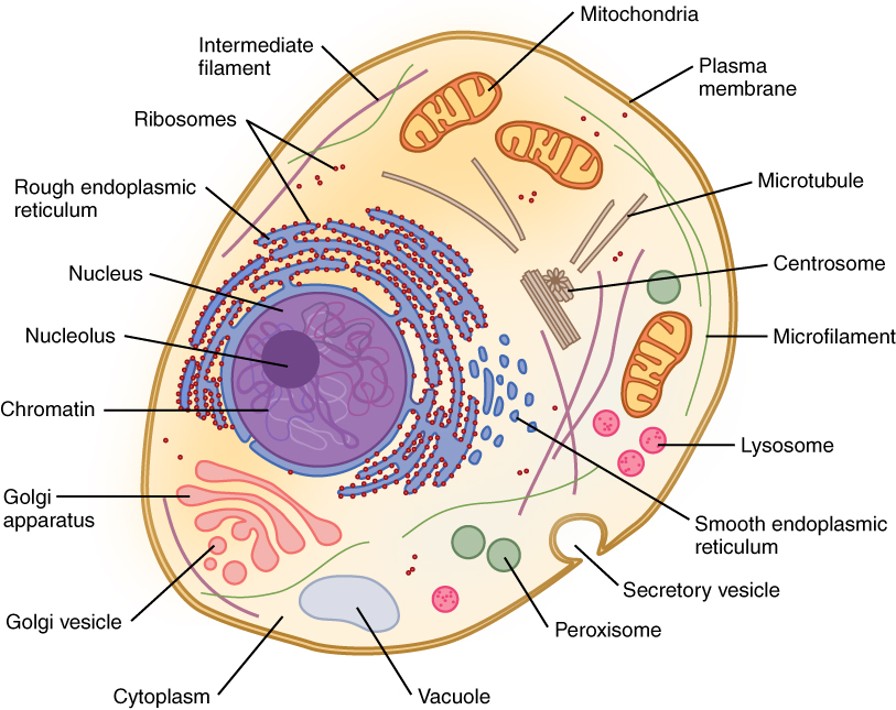
endoplasmic reticulum (ER)
composition: network of membranous channels extending throughout cytoplasm
function: synthesis of secretory products; intracellular storage and transport
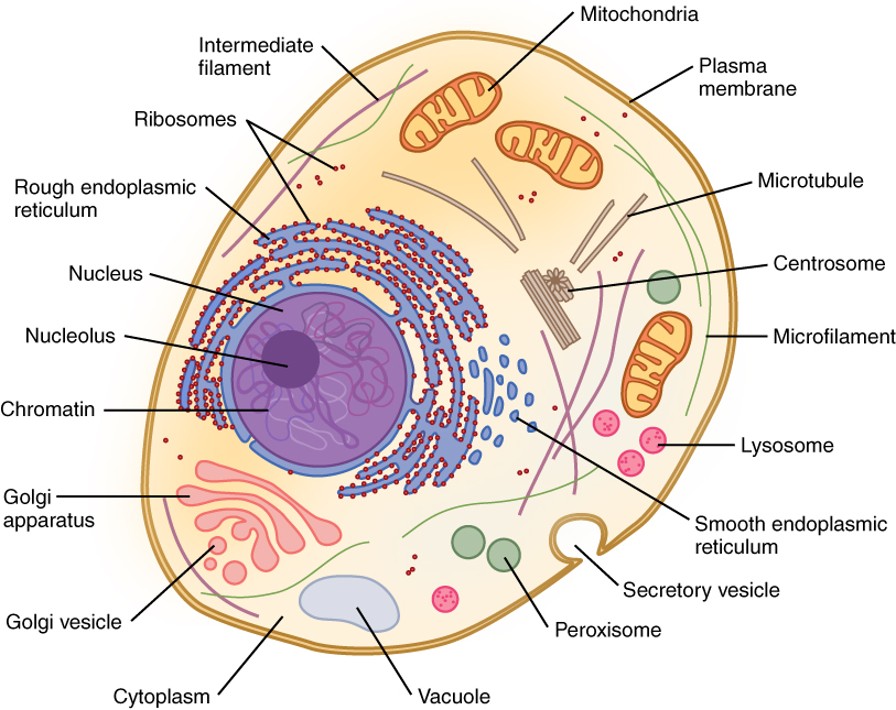
rough ER
composition: has ribosomes bound to membranes
function: modification and packaging of newly synthesized proteins
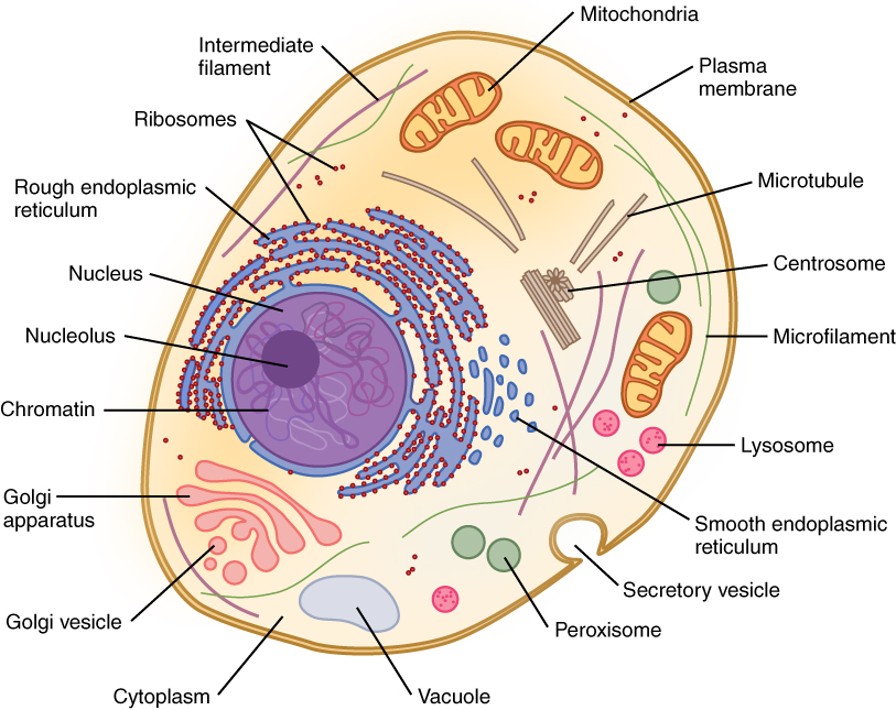
smooth ER
composition: lacks attached ribosomes
function: lipid, steroid, and carbohydrate synthesis; calcium ion storage
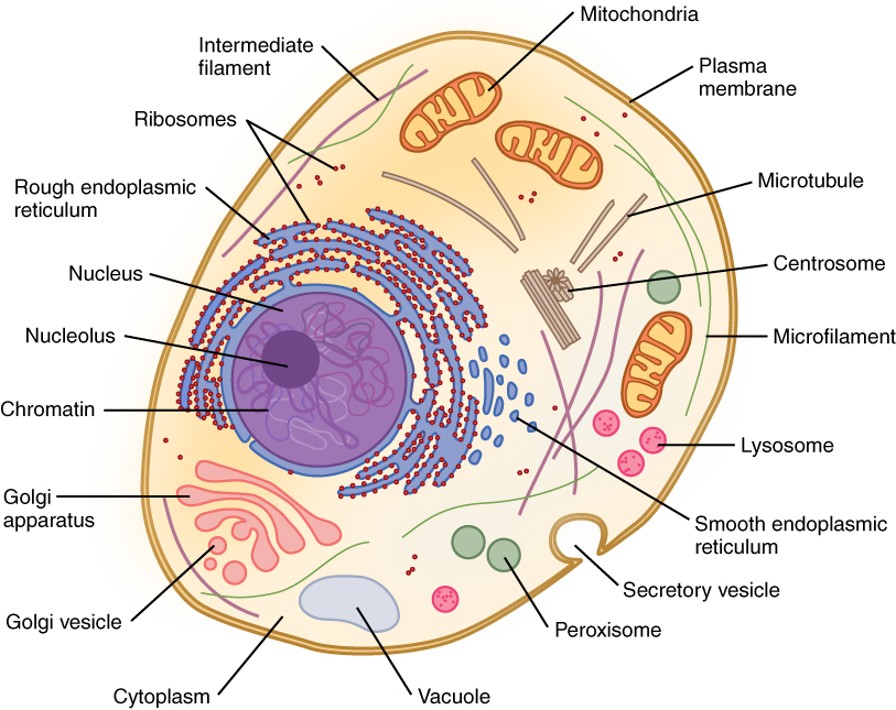
golgi apparatus
composition: stacks of flattened membranes containing chambers
functions: storage, alteration, and packaging of secretory products and lysosomal enzymes
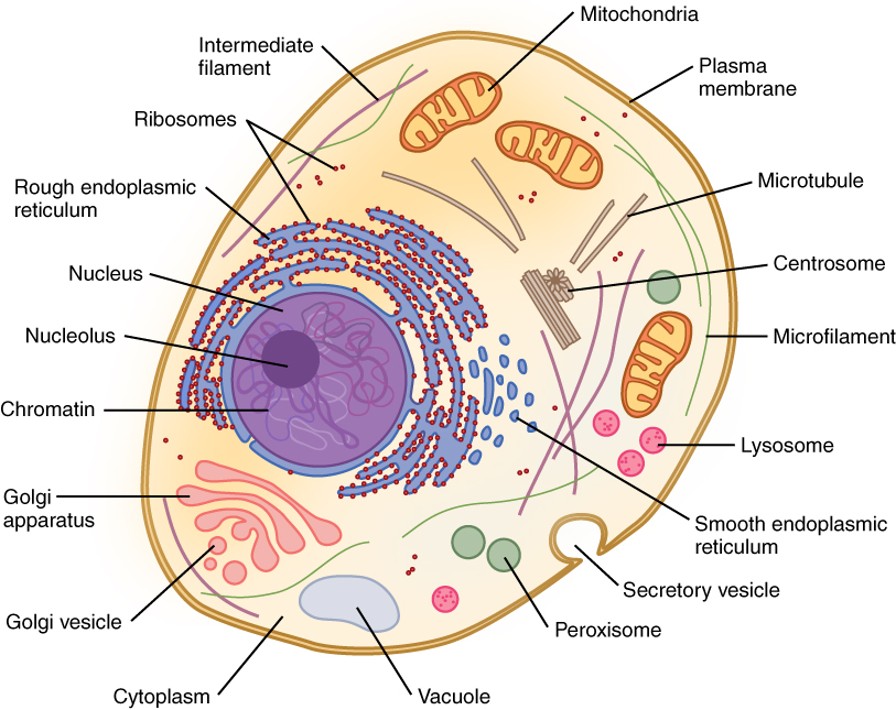
lysosome
composition: vesicles containing digestive enzymes
function: intracellular removal of damaged organelles or of pathogens
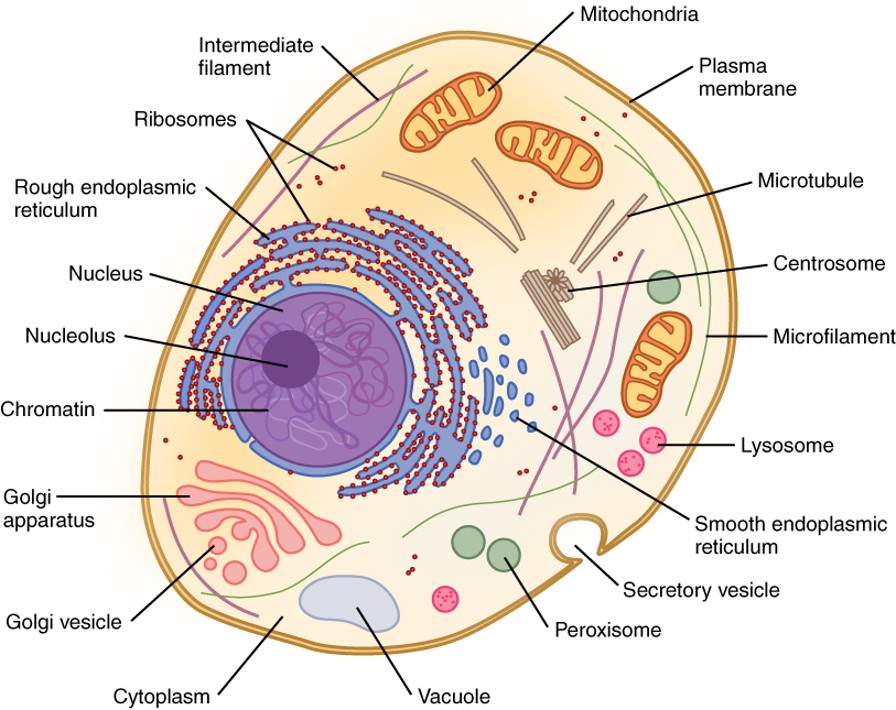
peroxisome
composition: vesicles containing degradative enzymes
functions: catabolism of fats and other organic compounds; neutralization of toxic compounds generated in the process
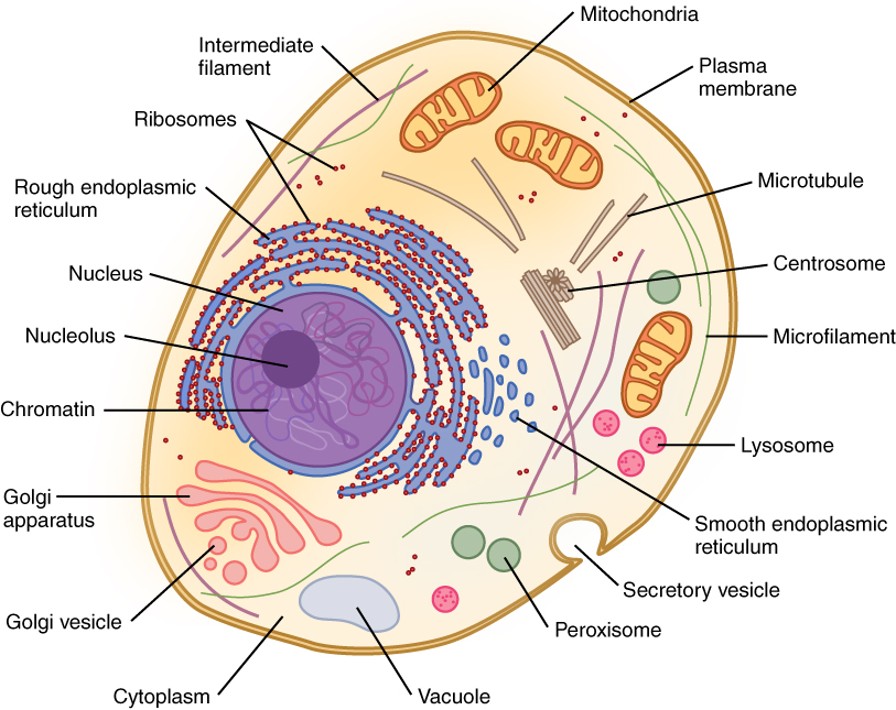
cell membrane
composition: outer boundary of cell
functions: controls entry of ions and nutrients, elimination of waste, release secretory products
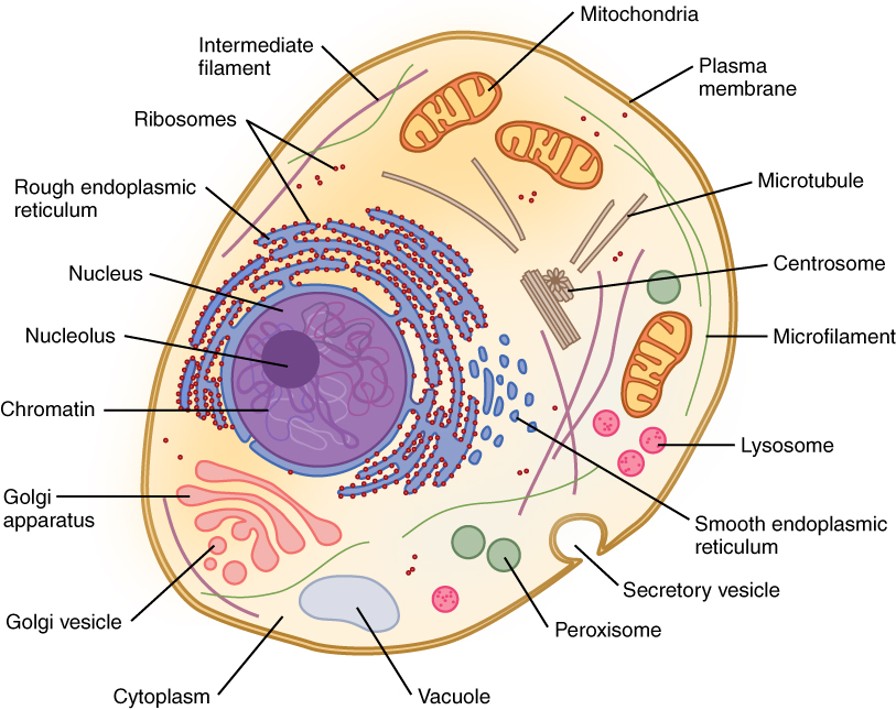
simple diffusion
The structure of the lipid bilayer allows only small, uncharged substances such as oxygen and carbon dioxide to pass through the cell membrane, down their concentration gradient
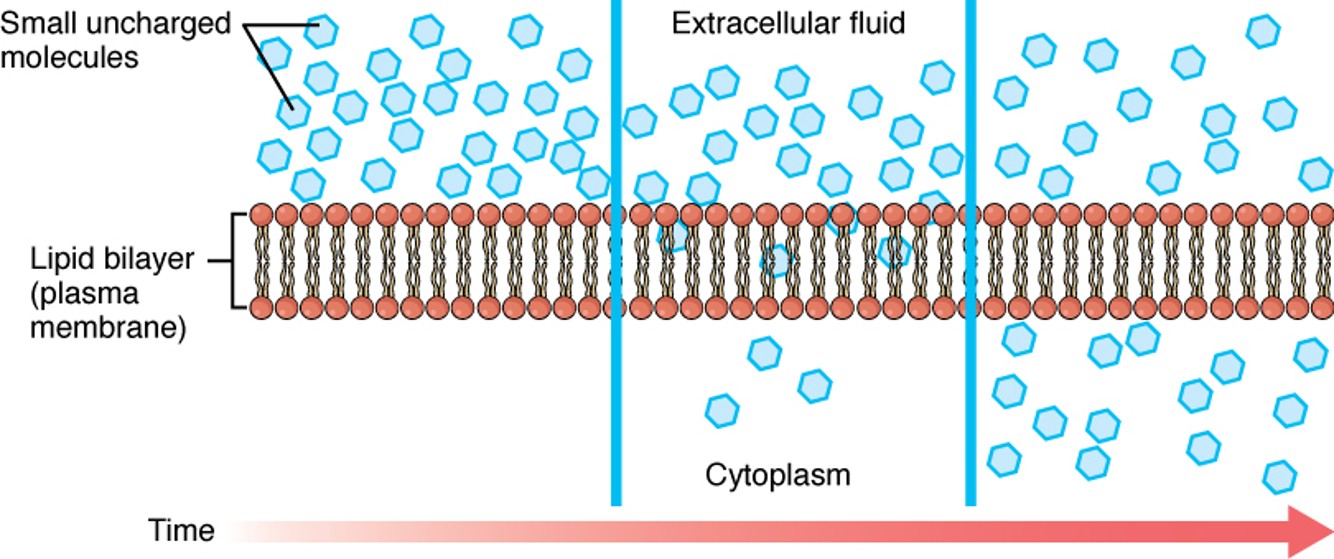
facilitated diffusion
A type of passive transport where molecules move across a cell membrane through a protein channel or carrier protein, without requiring energy (ATP). It helps large or charged molecules, like glucose and ions, cross the membrane along their concentration gradient.
osmosis
The passive movement of water molecules across a semipermeable membrane from an area of low solute concentration to an area of high solute concentration until equilibrium is reached. No energy (ATP) is required
aquaporins
Specialized channel proteins in the cell membrane that allow water molecules to pass through quickly and efficiently, facilitating osmosis
hypertonic solution
has a solute concentration higher than another solution
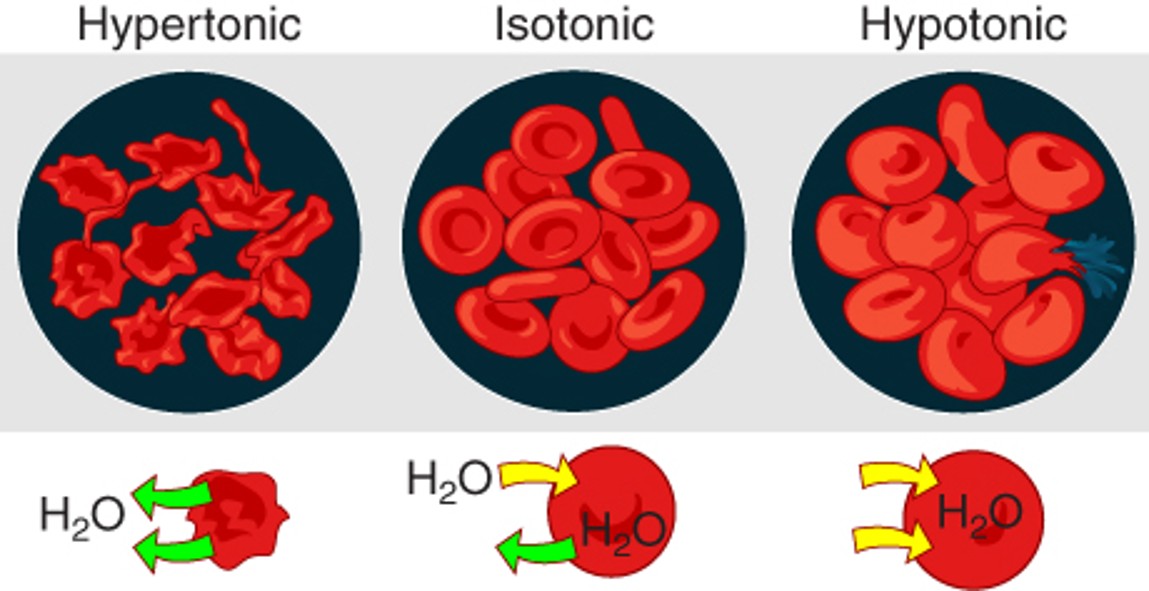
isotonic solution
has a solute concentration equal to another solution

hypotonic solution
has a solute concentration lower than another solution
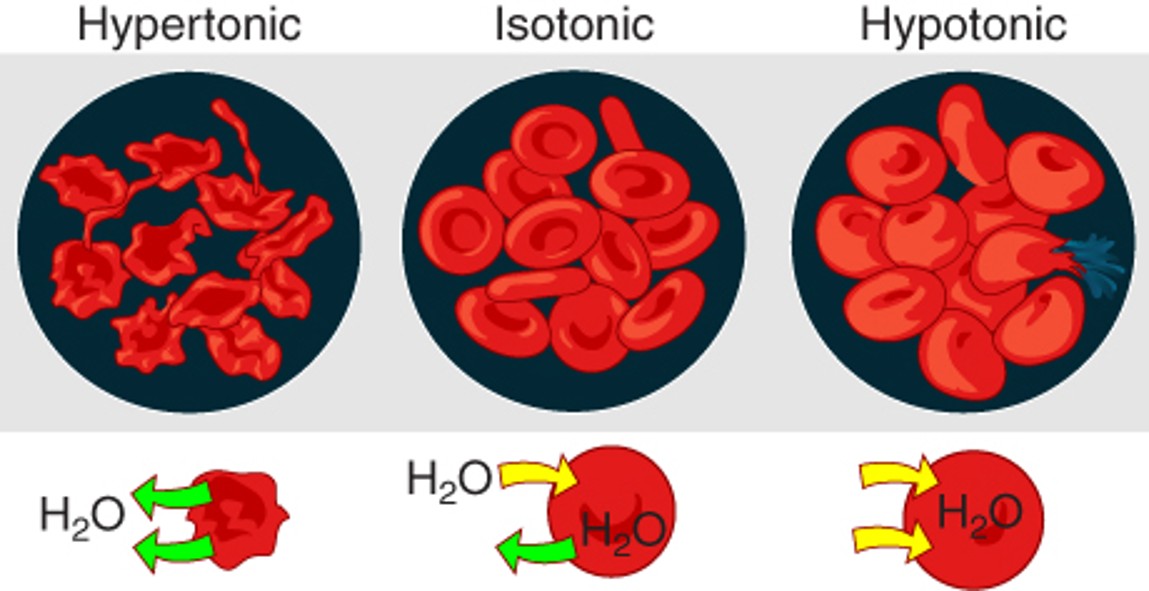
sodium potassium pump
is a component of cell membranes that uses ATP energy to transport sodium and potassium ions against their concentration gradients. It moves three sodium ions out of the cell and two potassium ions into the cell, ensuring essential ion balance across the membrane.
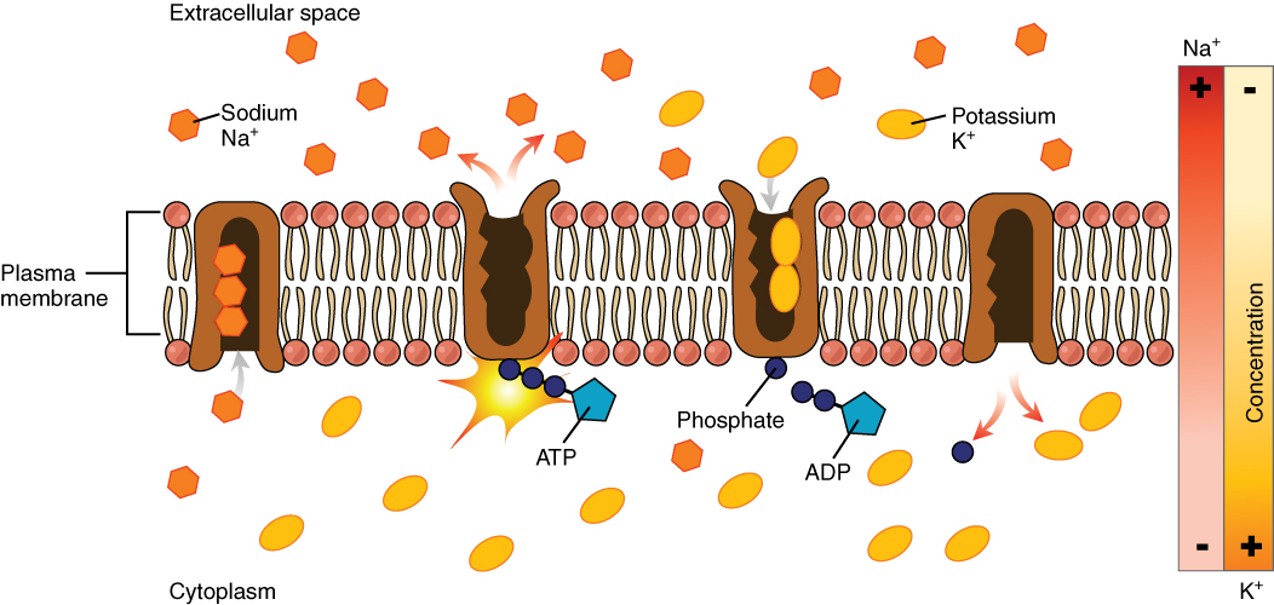
phagocytosis
form of endocytosis which is relatively nonselective, the cell takes in a large particle. (eating)
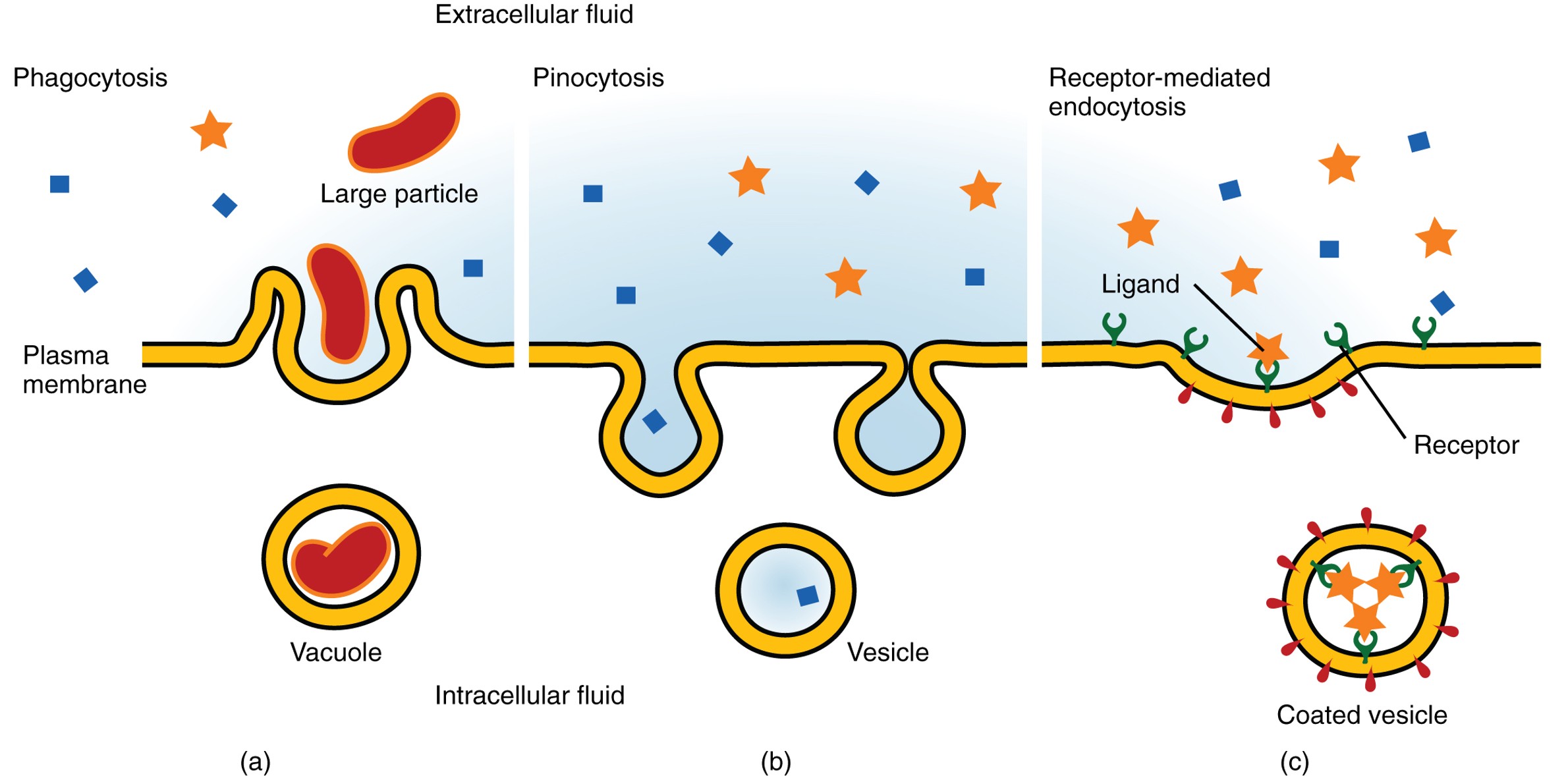
Endocytosis
is a form of active transport in which a cell envelopes extracellular materials using its cell membrane
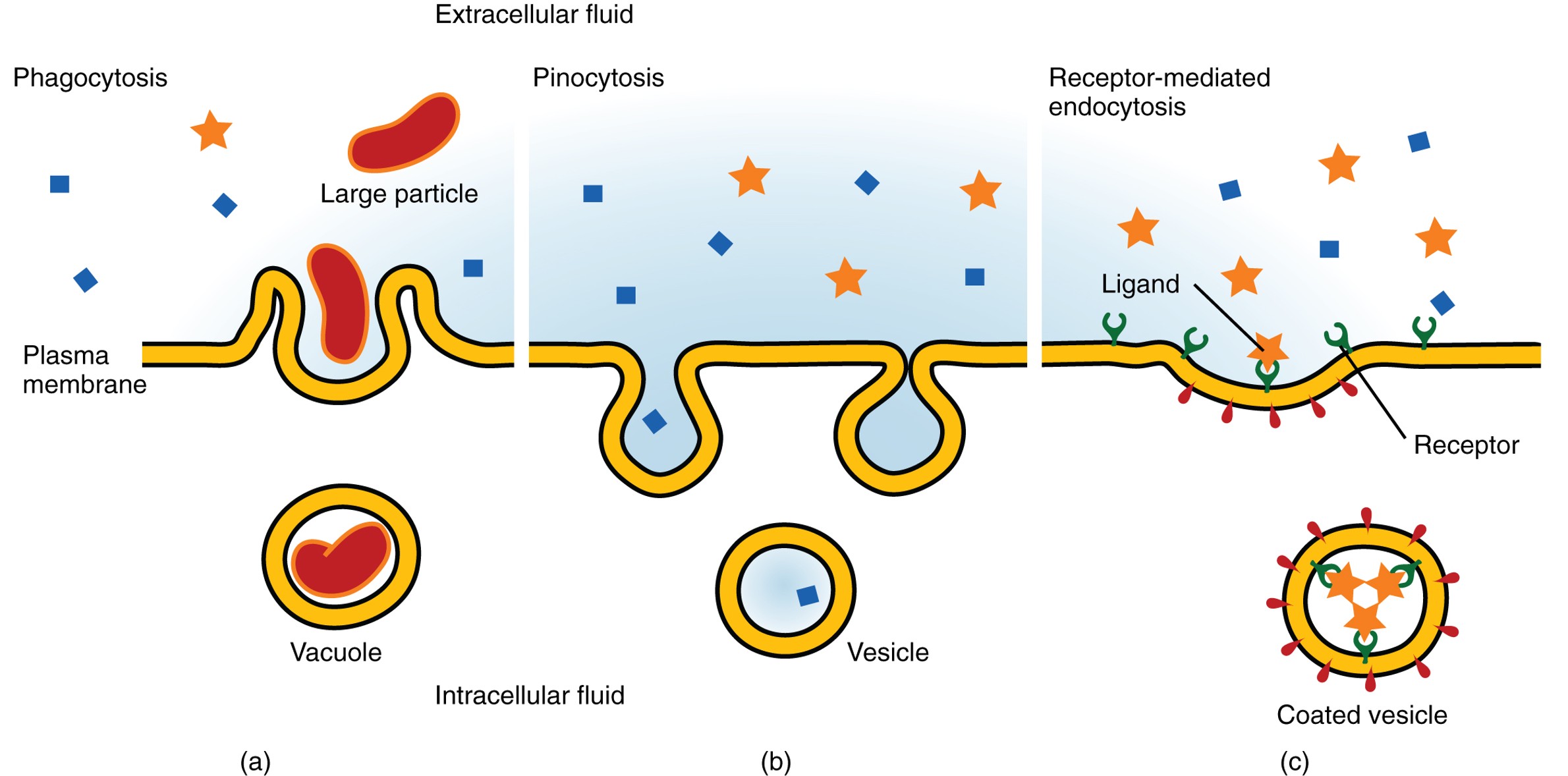
pinocytosis
form of endocytosis where the cell takes in small particles in fluid. (drinking)
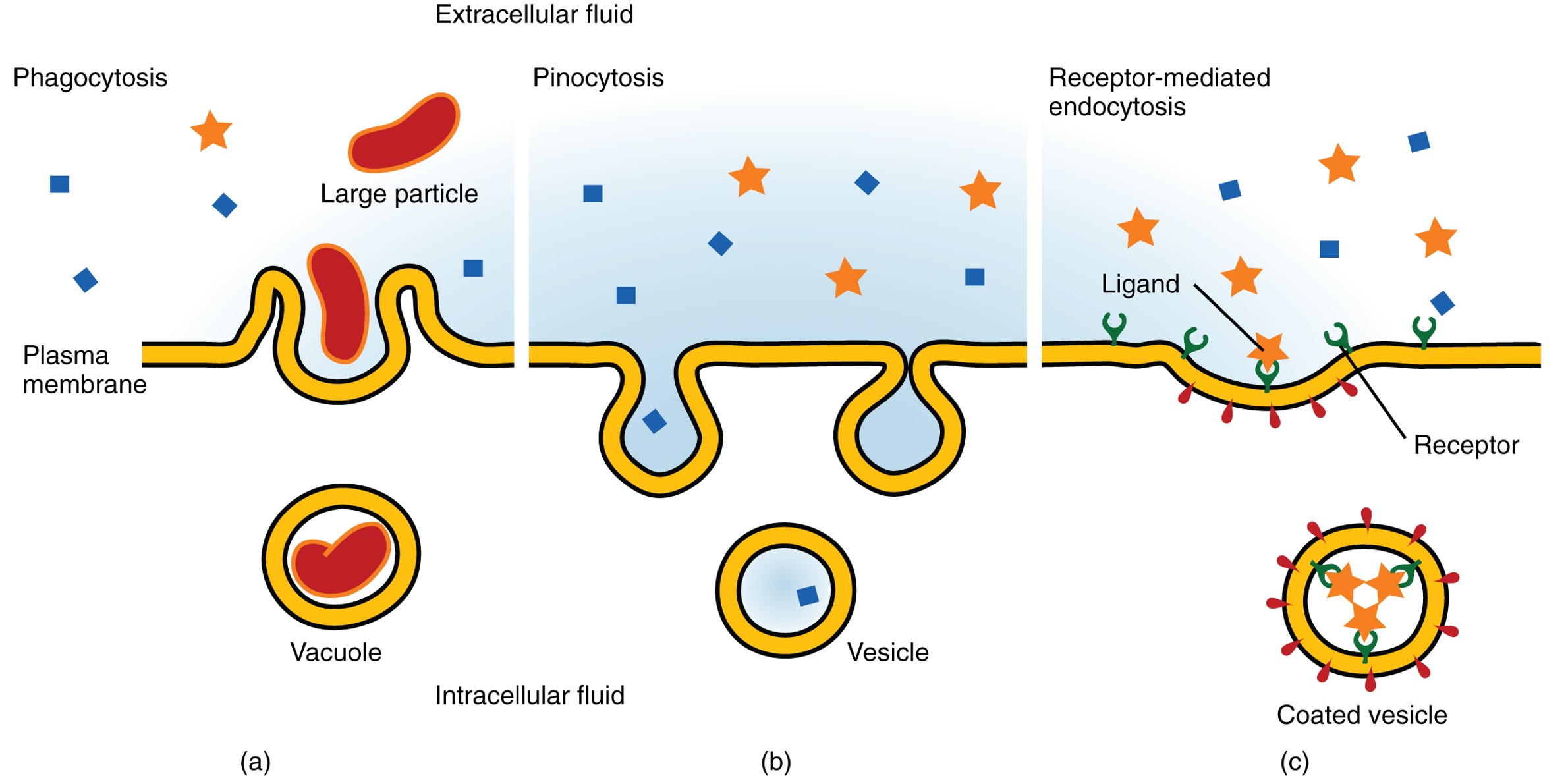
receptor-mediated endocytosis
in contrast, this is quite selective. When external receptors bind a specific ligand, the cell responds by endocytosing the ligand.
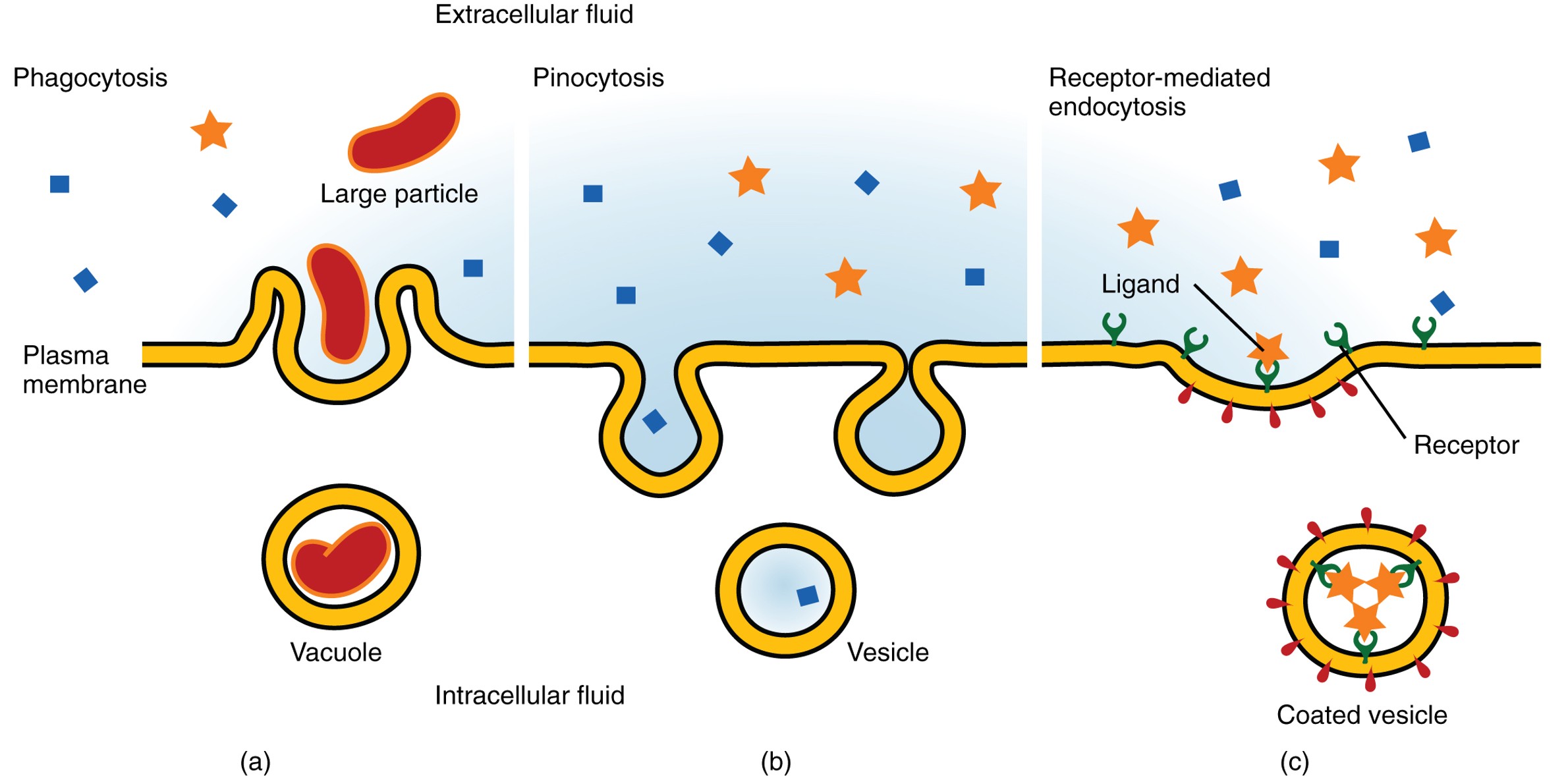
exocytosis
is much like endocytosis in reverse. Material destined for export is packaged into a vesicle inside the cell. The membrane of the vesicle fuses with the cell membrane, and the contents are released into the extracellular space.
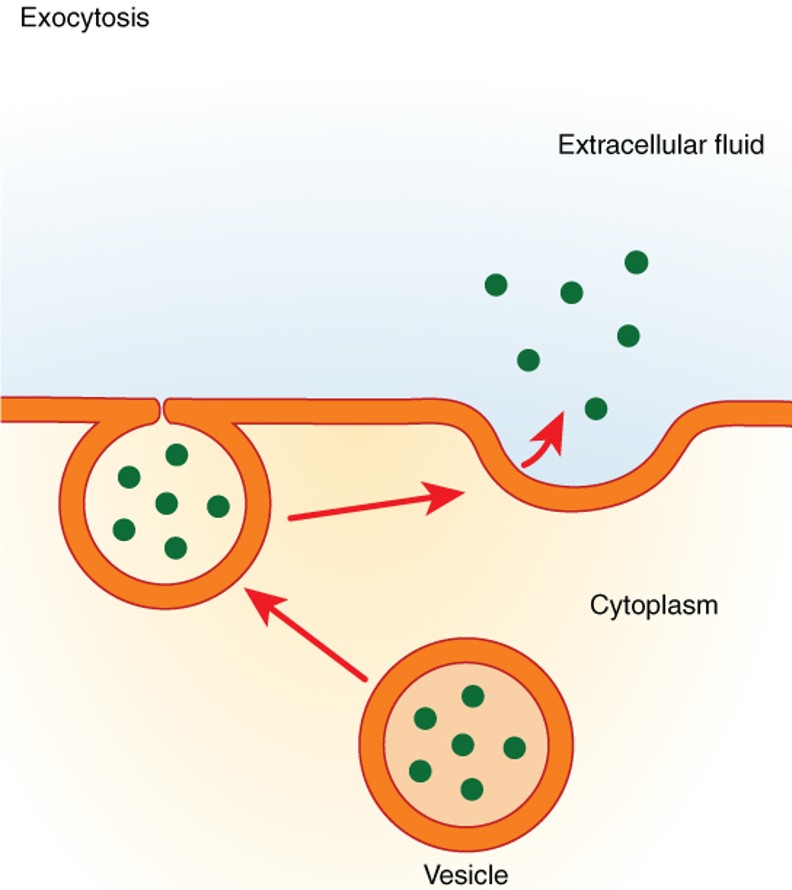
Endosymbiosis
is the theory that mitochondria, which are energy-producing structures in cells, were once independent bacteria. They entered a mutually beneficial relationship with larger cells, becoming a permanent part of those cells and helping them produce energy more efficiently.
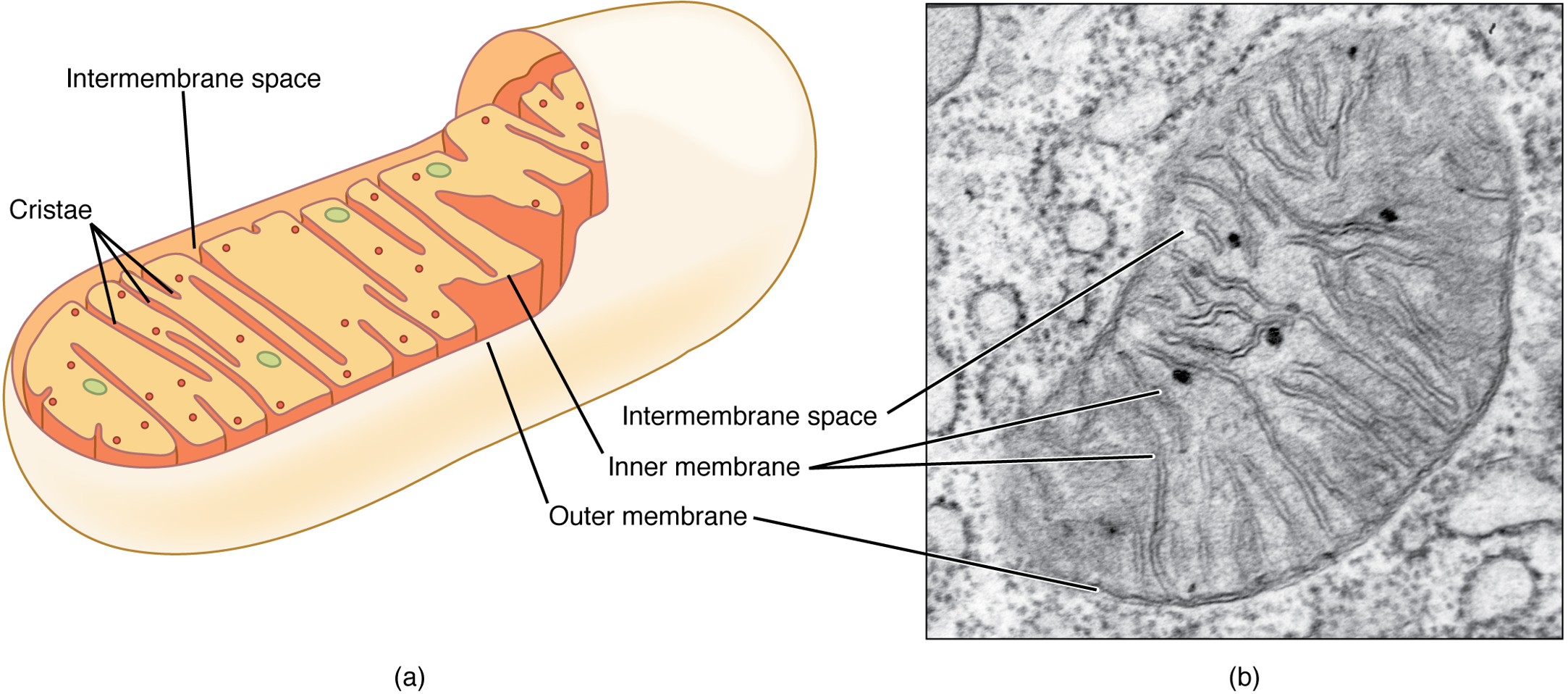
microtubules
are tube-shaped structures in cells, part of the cytoskeleton. They help maintain the cell's shape, enable movement, and are important for dividing genetic material during cell division.

intermediate filaments
are durable, rope-like structures in cells, part of the cytoskeleton. They help maintain cell shape, anchor organelles in place, and provide strength and support to the cell.
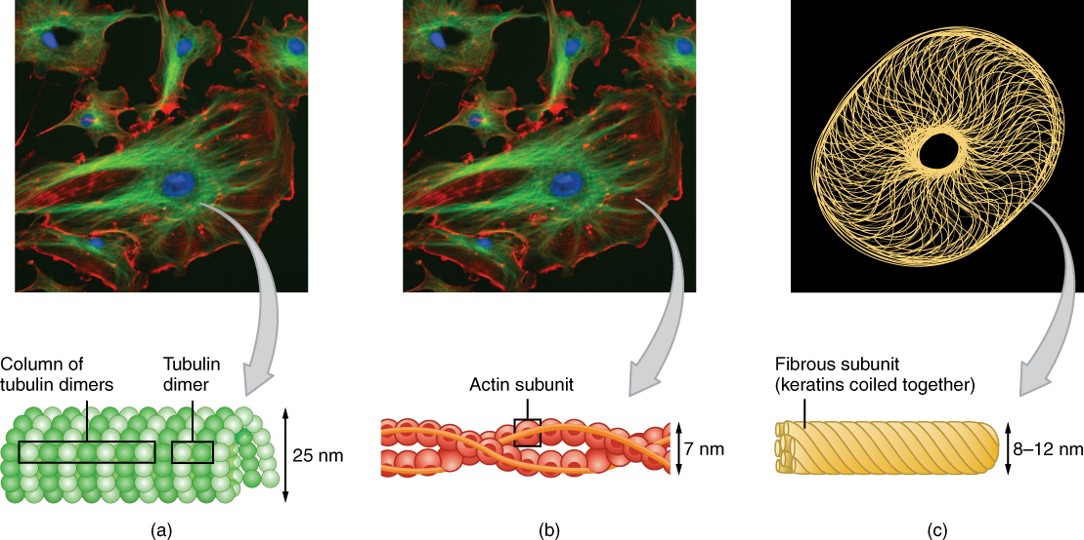
Microfilaments
are thin, thread-like structures in cells, part of the cytoskeleton. They support the cell's shape, help with movement, and are involved in muscle contraction and cell division.
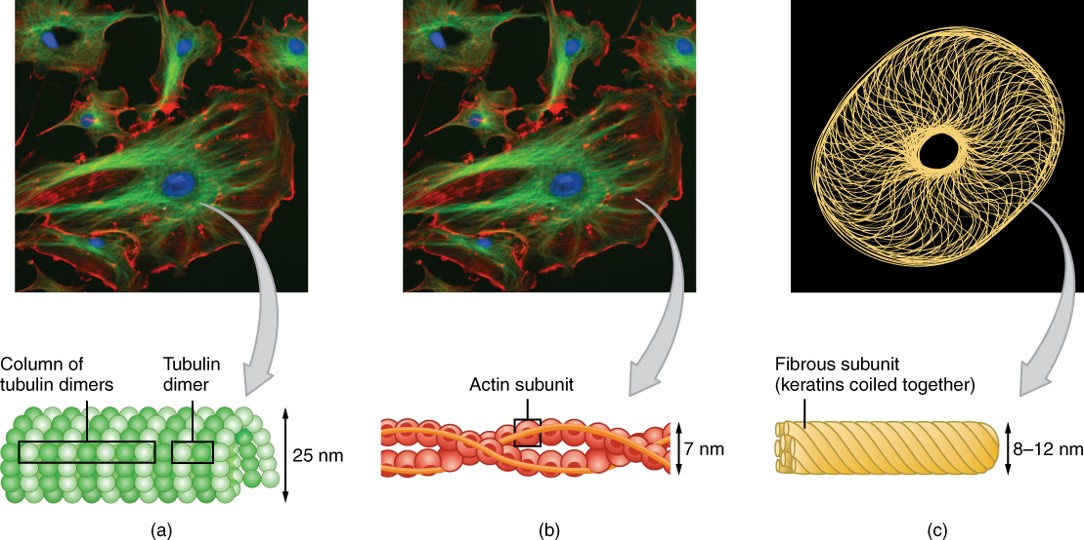
nuclear envelope
A double-layered membrane that surrounds the nucleus in eukaryotic cells, separating the contents of the nucleus from the cytoplasm.
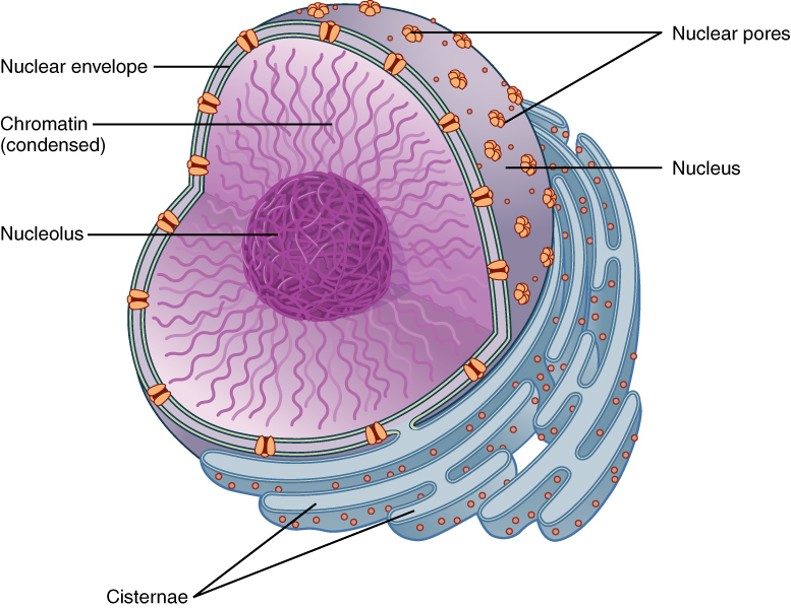
nuclear pores
Large protein complexes that span the nuclear envelope, allowing the transport of molecules across the nuclear membrane, including RNA (which can carry out DNA) and proteins (ribosomes)
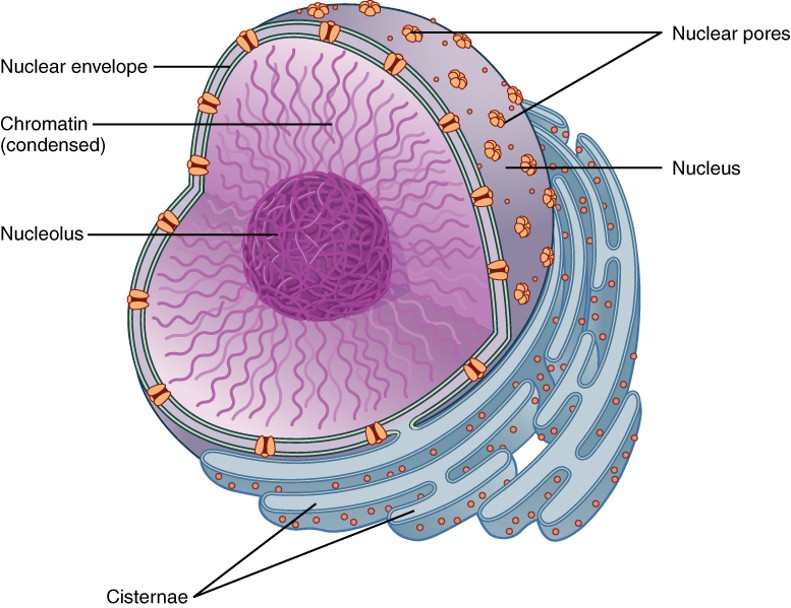
nucleolus
A dense, spherical structure in the nucleus of eukaryotic cells where ribosomal RNA is synthesized and assembled with proteins to form ribosomal subunits.
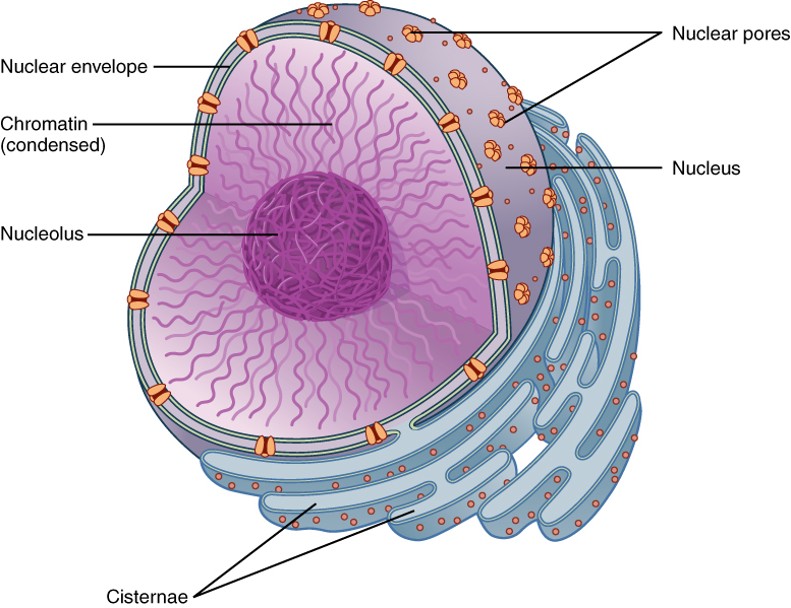
Chromatin (condensed)
The complex of DNA and proteins, mainly histones, that forms chromosomes within the nucleus of eukaryotic cells. Condensed chromatin is tightly packed and generally not actively transcribed.
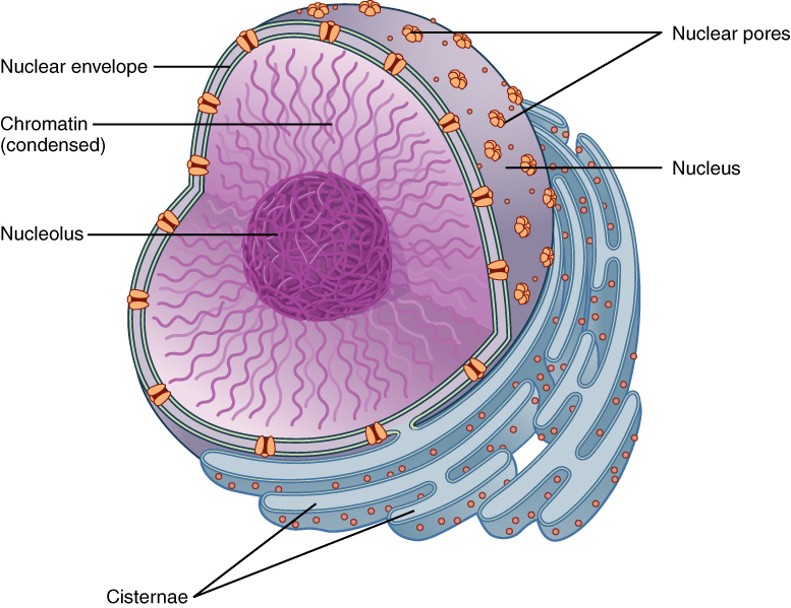
Cisternae
Flattened membrane-bound sacs found in the endoplasmic reticulum and Golgi apparatus, involved in the synthesis, processing, and sorting of cellular products.
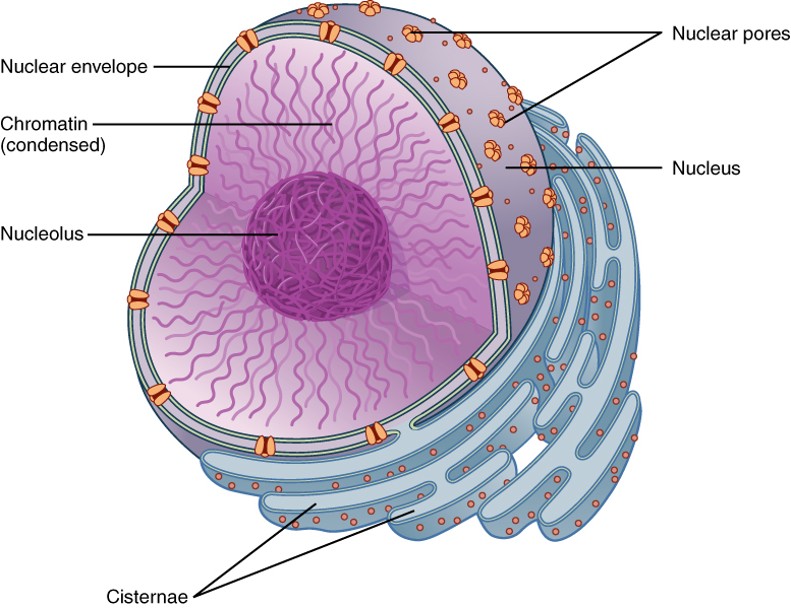
Distinction of Multinucleate Muscle Cells
Multinucleate muscle cells contain many nuclei, unlike cardiac and smooth muscle cells which have a single nucleus.
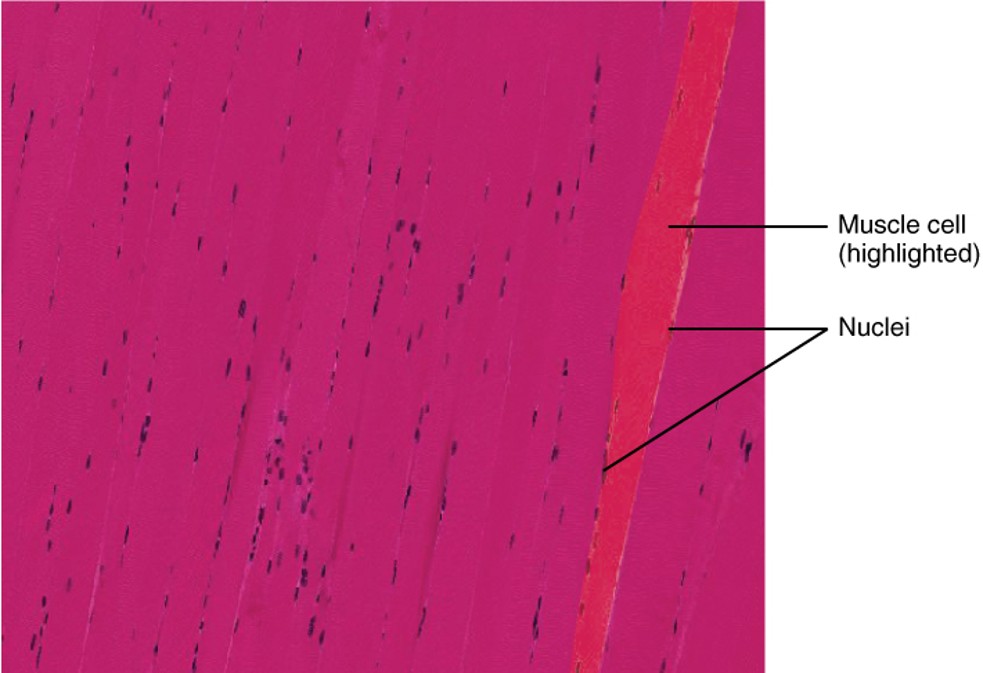
Alternate Name for Multinucleate Muscle Cells
Multinucleate muscle cells are also known as muscle fibers due to their long and fibrous nature
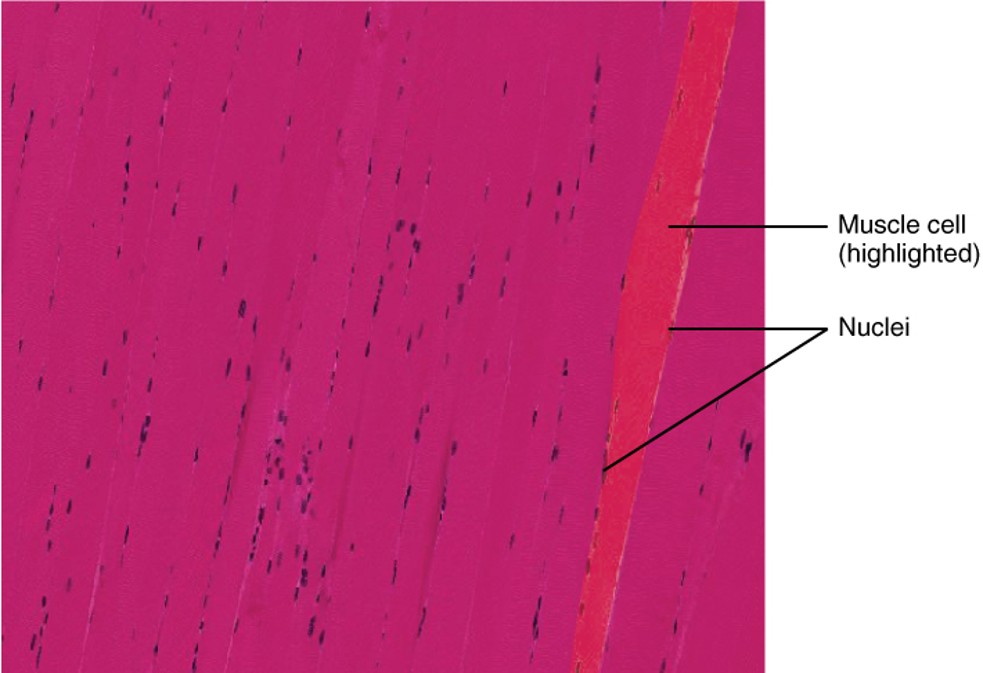
Formation of Multinucleate Muscle Cells
Multinucleate muscle cells form by the fusion of many myoblasts during development, conserving the nuclei of the fused cells in the mature muscle cell.
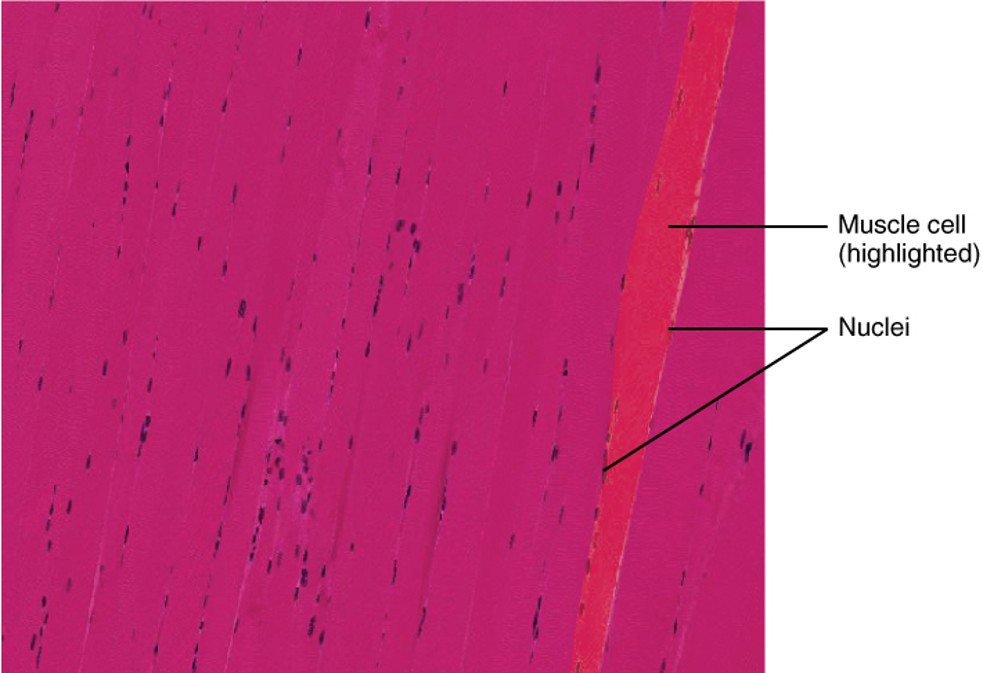
Importance of Multinucleate Characteristic
The multinucleate characteristic of these muscle cells allows for extensive protein synthesis and supports the high demands of skeletal muscles.
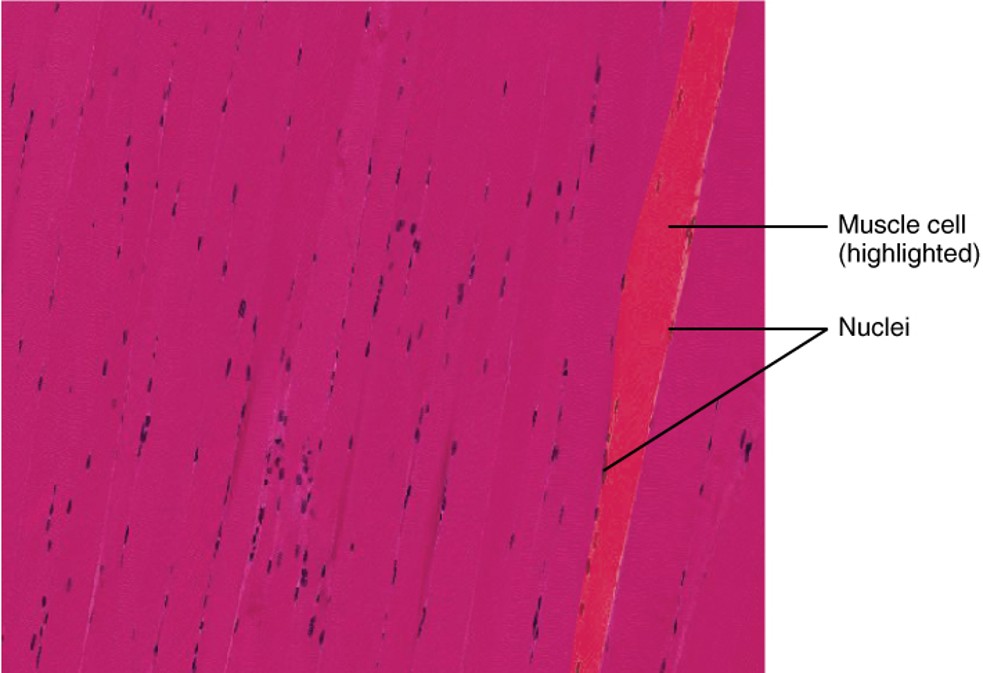
red blood cells (nucleus)
or erythrocytes, lack a nucleus when mature, allowing more room for hemoglobin and enhancing their oxygen transport efficiency. The nucleus is expelled during their development to optimize their biconcave shape for better oxygen delivery
Hematopoiesis
the process of blood cell production in the bone marrow. Stem cells differentiate into red blood cells, white blood cells, and platelets, supporting immune function, oxygen transport, and clotting.
stem cells
undifferentiated cells that can self-renew and differentiate into various specialized cell types. They are essential for tissue growth, repair, and regeneration, serving as the body's natural repair system
Multipotent Stem Cells
can differentiate into a limited range of cell types related to a specific tissue or organ, making them crucial for tissue-specific repair and regeneration.
Pluripotent Embryonic Stem Cells
can differentiate into nearly all cell types, derived from any of the three germ layers: endoderm, mesoderm, or ectoderm. They are derived from embryos and have the potential to develop into almost any cell in the body.
Totipotent Embryonic Stem Cells
have the highest potential, capable of developing into any cell type in the body as well as extraembryonic, or placental, cells. They are typically found only at the earliest stages of embryonic development.
Tight junctions
are barriers between cells that prevent substances from leaking through the spaces between cell
Adhesion Junction
connect cells to each other, providing support and stability to tissues.
gap junction
are channels that let small molecules pass directly between neighboring cells, enabling the cells to communicate quickly